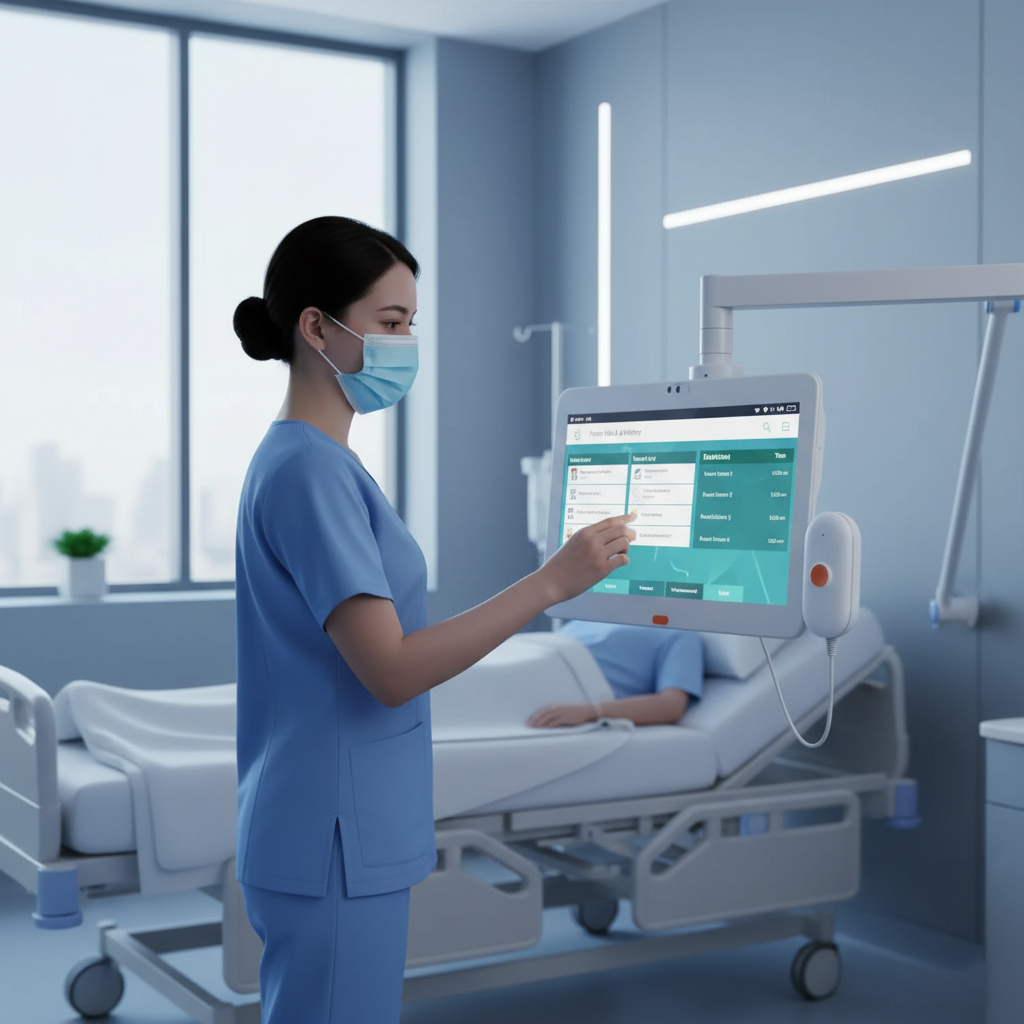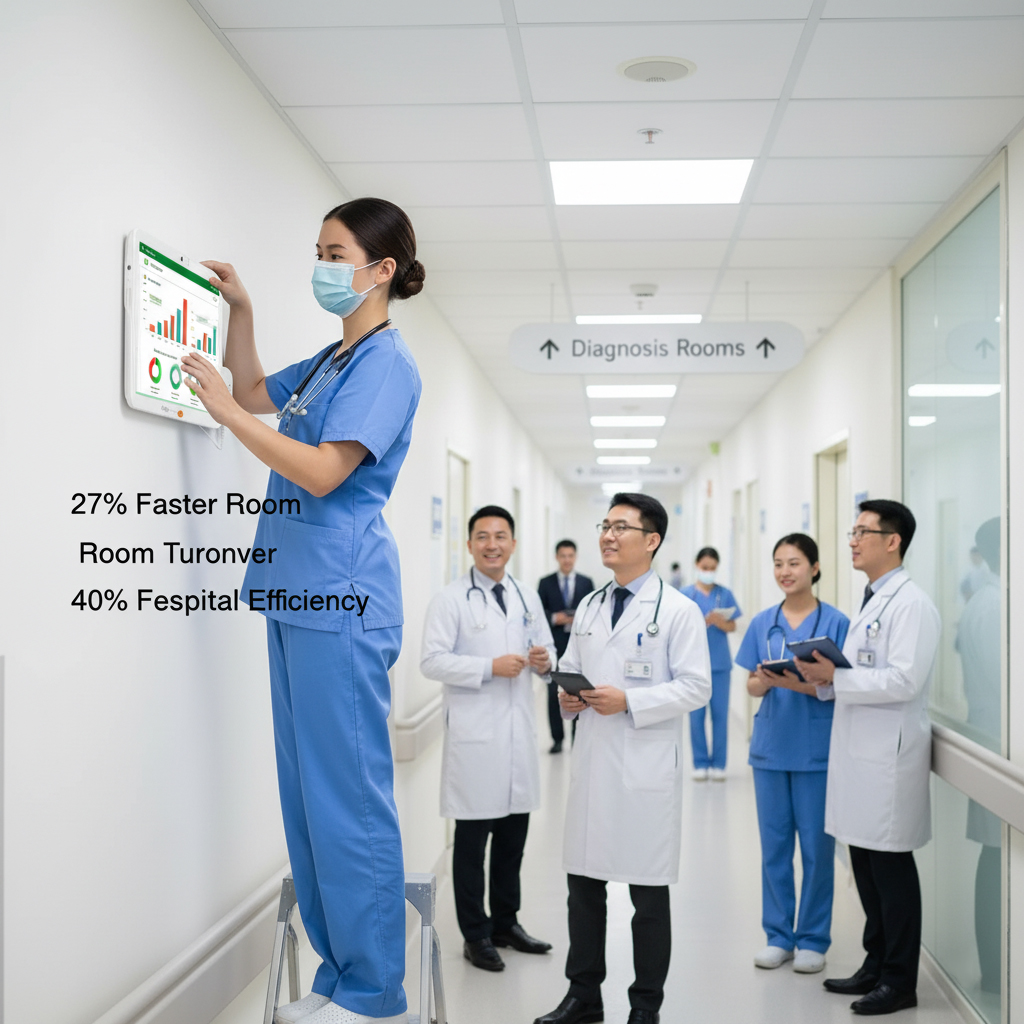From a Single Device to Global Deployment — How a Vision for Smart Healthcare Displays Took Shape
![]() 2025-11-17
2025-11-17
![]() Hopestar
Hopestar
Every transformation begins with a question.
For us, it was simple: What would hospitals look like if essential interactions were carried out through intuitive, reliable digital interfaces?
What started as a modest experiment with a single touch device gradually evolved into a healthcare-focused display ecosystem used in hospitals, clinics, senior-care centers, and rehabilitation facilities around the world. Over time, the journey stopped being about hardware alone—it became about solving the practical challenges medical professionals face every day.

A Practical Beginning: Making Healthcare Workflows Less Complicated
The earliest prototype was not designed to impress; it was designed to solve a problem. Nurses spent too much time walking between stations, patients lacked easy access to information, and hospital IT teams struggled with outdated terminal systems incompatible with modern software.
This gap sparked the development of purpose-built devices tailored specifically for healthcare. Solutions such as the medical tablet, designed with antimicrobial housings and stable Android-based firmware, began offering a more efficient alternative to traditional terminals.
As deployments expanded, the team recognized one truth: healthcare environments operate differently from commercial spaces. Devices must be reliable, secure, durable, and easy for both staff and patients to use.

Scaling Up: From Bedside to Entire Wards
One breakthrough came with the introduction of the bedside tablet—a patient-facing interface mounted directly beside hospital beds. Initially created to reduce the workload of nursing teams, these displays gradually became a multifunctional communication hub.
Patients could now:
Request assistance
Check medication schedules
Communicate with staff
Access entertainment
View recovery instructions
As hospital feedback accumulated, the concept matured into a full medical ward tablet framework capable of connecting multiple departments and supporting centralized management.
The more hospitals adopted the system, the clearer it became: the future of modern wards would rely on interconnected smart endpoints.
Engineering for Reliability: What Large-Scale Deployments Taught Us
Expanding from a single trial device to mass deployments required more than hardware replication. It required rethinking structure, components, and lifecycle management.
Through thousands of installations, several principles emerged:
1. Medical environments demand industrial-grade stability
Hospitals run 24/7. Displays like the patient monitoring tablet must remain operational with near-zero downtime. Components were upgraded to ensure long operating hours, stable power performance, and passive cooling for quiet operation.
2. Cleanliness and safety are non-negotiable
Specialized materials resistant to cleaning agents, antibacterial coatings, and sealed touchscreens became standard.
3. Integration flexibility is essential
Medical software ecosystems vary. Devices needed to support HIS, EMR, LIS, PACS, nurse-call systems, and custom hospital applications—without complex setup.
4. Remote management saves IT resources
Once devices scaled from dozens to thousands, centralized OTA updates and monitoring tools became critical to maintaining system health.
These improvements weren’t optional—they were mandatory to win trust from institutions responsible for patient care.

From Single Hospitals to International Healthcare Networks
As healthcare digitization accelerated, more hospitals across Asia, Europe, the Middle East, and the Americas began searching for reliable smart display terminals.
The combination of custom firmware, medical-grade design, and long-term supply capacity opened doors to international projects, including:
Smart wards
Elderly-care monitoring systems
Hospital information terminals
Digital nurse stations
Smart clinic kiosks
At this stage, the nurse station tablet and bedside tablet solutions became central components in many modernization initiatives.
Each deployment revealed new needs—heat dissipation in tropical regions, reinforced housings for high-traffic hospitals, multilingual UI support, long-term OS updates, or special connectivity requirements.
Meeting these needs strengthened engineering depth and accelerated product evolution.
A Partner-Driven Approach: Built Around Real Hospital Needs
The growth of the global healthcare display ecosystem wasn’t driven by marketing—it was driven by collaboration.
Healthcare clients needed:
Custom screen sizes
Special mounting structures
Extended product lifecycles
White-label options
Regional certifications
Secure firmware customization
These requirements shaped a flexible manufacturing and R&D model capable of delivering tailored solutions while maintaining consistency and reliability.
Over time, the product line expanded into a full suite of medical tablet solutions built for wards, nurse stations, clinics, and emergency environments—each adapted to the unique workflow of modern healthcare facilities.

Looking Ahead: Building the Infrastructure for Future Hospitals
Smart hospitals are moving toward interoperable systems where displays, sensors, cloud software, and medical databases operate seamlessly.
The next stage of development focuses on:
AI-assisted patient interaction
IoT connectivity inside wards
More integrated bedside tablet interfaces
Enhanced security for networked terminals
Touch panels optimized for gloved medical use
Battery-supported emergency tablets for mobile care
Long-cycle supply assurance for large institutions
What began as a single device has grown into a global healthcare display platform supporting millions of patients and professionals every year.
The mission remains unchanged:
Create technology that reduces complexity, improves communication, and makes medical environments more human-centered.

 86 13392660243
86 13392660243 hope17@cnhopestar.com
hope17@cnhopestar.com
 whatsapp
whatsapp
 Smart Efficiency on the Factory Floor: How Industrial Tablets Transformed Manufacturing and Logistics Operations
Smart Efficiency on the Factory Floor: How Industrial Tablets Transformed Manufacturing and Logistics Operations 












